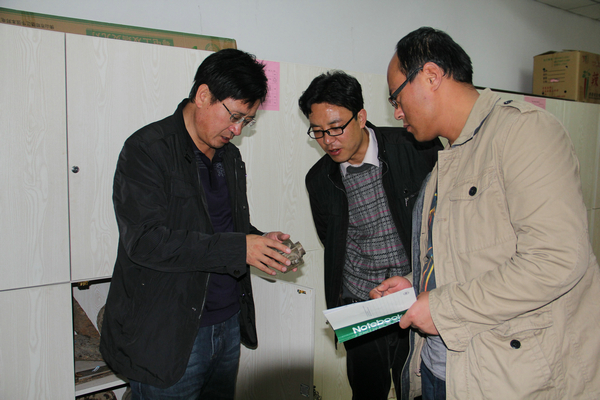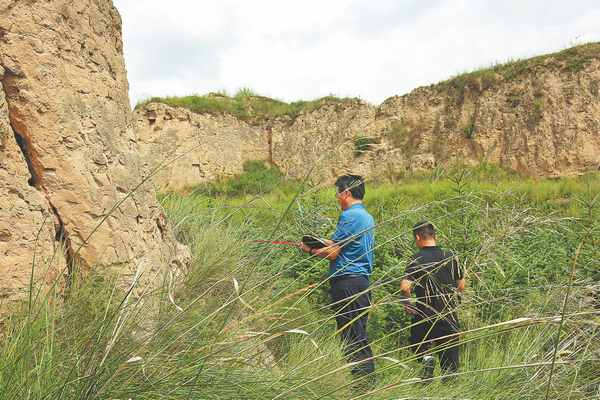- ~
- ~
- ~
- ~
- ~
Although initially the work conditions were rough, with poor housing and a shortage of staff, Liu's interest in cultural relics grew as he visited rural areas and ventured into the countryside to collect materials and delve into local records and history books.
During the third national general survey of cultural relics, from 2007-11, Liu led a team from the Longde Cultural Heritage Institute and did field work across 13 villages and towns in the county.
Altogether, they discovered 229 new cultural relic sites and completed the filing of more than 800 relics.

Liu curates an exhibition with his colleagues at Longde Museum. CHINA DAILY
Liu was named by the local government as an individual who had made an outstanding contribution to the general survey.
He also made a point of promoting the conservation of cultural heritage and relics in the process of the survey.
"Cultural relics are widely distributed throughout the countryside and, as such, face immense challenges in terms of protection," Liu explains.
"Agricultural production and residents' daily activities can cause damage to cultural relics, and it can be difficult to gather related evidence, making the handling process quite challenging," he adds.
Therefore, Liu frequently led his team to visit local rural households, disseminating information about the laws and regulations pertaining to cultural heritage protection and promptly responding to, and resolving, issues raised by the local residents.
His efforts paid off when he saw that an increasing number of villagers realized the significance of the treasures hidden in their backyards and became guardians of cultural relics themselves.
There have been no thefts of cultural relics in Longde during Liu's tenure, and he owes it to the efforts of local residents.

Liu (left) and a colleague survey an ancient beacon tower in Longde; Liu curates an exhibition with his colleagues at Longde Museum. CHINA DAILY
Cultural relics safety is the lifeblood of Liu's work.
Liu and his colleagues take shifts at the museum to ensure it is manned 24 hours a day.
In 2008, one night he was forced to fight off four thieves armed with just a spade.
"The alarm went off and the barrier protecting the cultural relics' warehouse had been broken," Liu recalls.
Fortunately, challenged by Liu, the intruders lost their nerve and ran off.
"Looking back, I still feel a bit frightened, but at that time, my only thought was to drive away the intruders and protect the cultural relics," Liu says.
With regard to immovable cultural relics protection, Liu made things clear about their ownership, management, maintenance and utilization at county, town and village levels, and kept compiling and adding to protection archives for the relevant work units.
He has ensured that he is at the forefront of the work, from conducting surveys of immovable cultural relics and investigation and field exploration, to restoration and transport of movable ones.
In particular, he has paid special attention to the transportation side.
"You have to be as careful holding a cultural relic as you are holding a baby," Liu says.
"Like a newborn, cultural relics are delicate and irreplaceable. The one difference is that, once damaged, even if repaired, a cultural relic can never be the same," he says.
京ICP备13028878号-6





